A terminal station is a station where a line ends. All trains enter and leave the station into the same direction. These setups are usually common for big cities, where the station was built at the center of what was the size of the city back then, or where a line would not be extended for topographic reasons (at the coast or in the mountains). This type of station enables building big and prestigious looking stations buildings. It also has the advantage of enabling passengers to change trains in a barrier-free manner - which however often results in long ways (an infamous example for this being Munich main station).
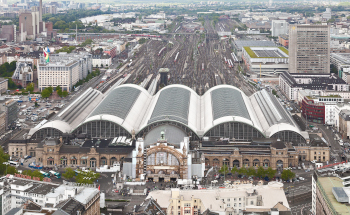
The photo shows Frankfurt main station, one of the largest terminal stations in Europe. Other well-known examples in Germany would be (among many others) in Leipzig and Munich. Other well known examples include the terminal stations in London, Paris or Moscow, to name but a few.
Terminal stations become very inefficient once traffic increases, because all trains have to pass the junction in front of the station twice, when entering the station and again when leaving. It is therefore necessary to make this junction as efficient as possible. That is also the reason why many such stations have been abandoned (e.g. in Hamburg), have been rebuilt into through stations (e.g. in Berlin) or were later extended and are now combined terminal and through stations (such as Zürich HB). The inefficiency also comes into play in the game once the number of trains becomes large enough.
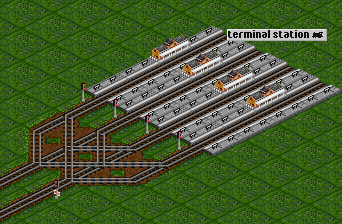
The standard solution for terminal stations looks something like this. In front of every platform there is a path signal which faces the platform. Trains reserve paths to the platform across that signal, as path signals can be passed from the back. When exiting the station, the train will wait at the signal until it has reserved a path through the junction area. The signal on the entry track is a one-way signal to prevent trains from going there.
One can also build stations with a different number of platforms, depending on the situation.
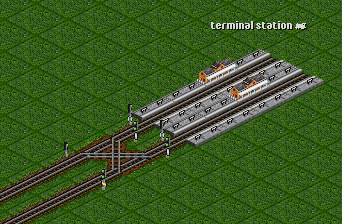
If, for whatever reasons, you do not want to use path signals (which are especially useful here), can use presignals instead. This will work reasonably well for a small station with two or three platforms and little traffic, but anything larger than that will result in trains waiting in front of the station because the signal block in front of the station becomes a bottleneck. This solution has been obsolete since about 2008 (or whenever path signals became available), so this setup is only shown here for historic reasons and completeness.
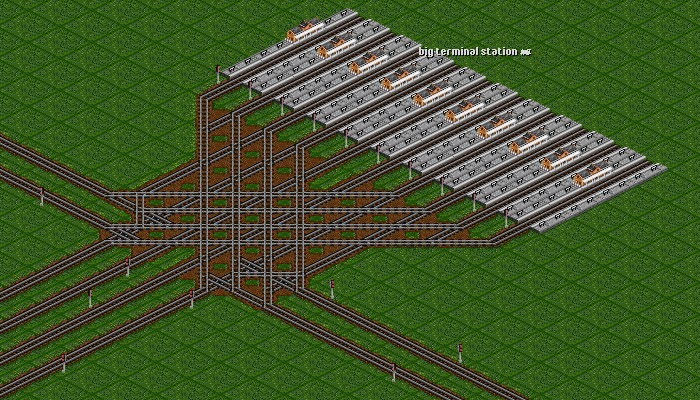
A huge terminal station could look similar to this image. There are several double-tracked lines leading to and from the station. Signalling is without any surprises, the bigger problem is that trains are impeding each other, even with path signals. Depending on the train orders, it may be necessary for a train coming from the left and therefore entering a platform towards the left, to leave and try to get to the line on the right. That means crossing the whole big junction area, blocking everything else in the process. This will become a huge problem when traffic increases, as lots of trains will be on their way through the junction area.
The same problem will be relevant for the lines to the lower left. Trains from there have to go through the whole big junction area to get to a platform, and then again when leaving. At the same time, trains from the left and right need to get to the station (or away from it), so the track connections in front of the station are the issue, not the station itself.
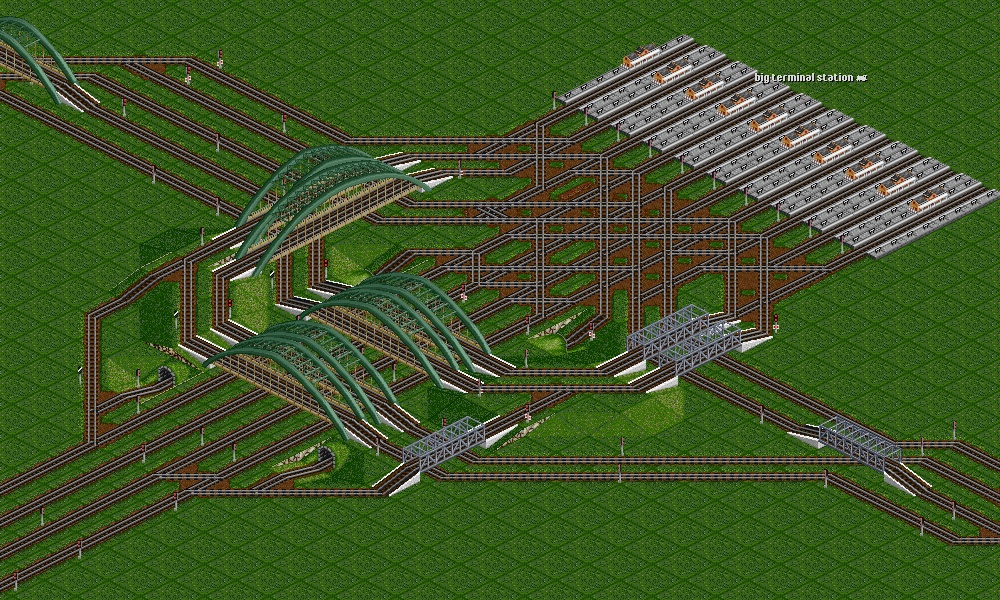
After extensive experimenting the station looks like this. While the station has not changed at all, the junction area has been refined drastically. The main goal is to allow as many train movements to and from the station without crossing paths. Reducing the crossing paths is paramount to improve station efficiency here.
One can easily see the following changes: Additional tracks to provide multiple ways for trains to enter and exit the station. If one way is blocked by another train, the other way can be used. Trains from the left and right can now also enter the area both to the left and right of the station. The lines at the bottom left also have more tracks, outside the picture there are additional switches and flyover structures to sort out the trains for the various lines.
One could now add waypoints to the various ways in front of the station to force trains to go to suitable platforms depending on their orders, so that they do not have to cross the whole junction area unnecessarily.
